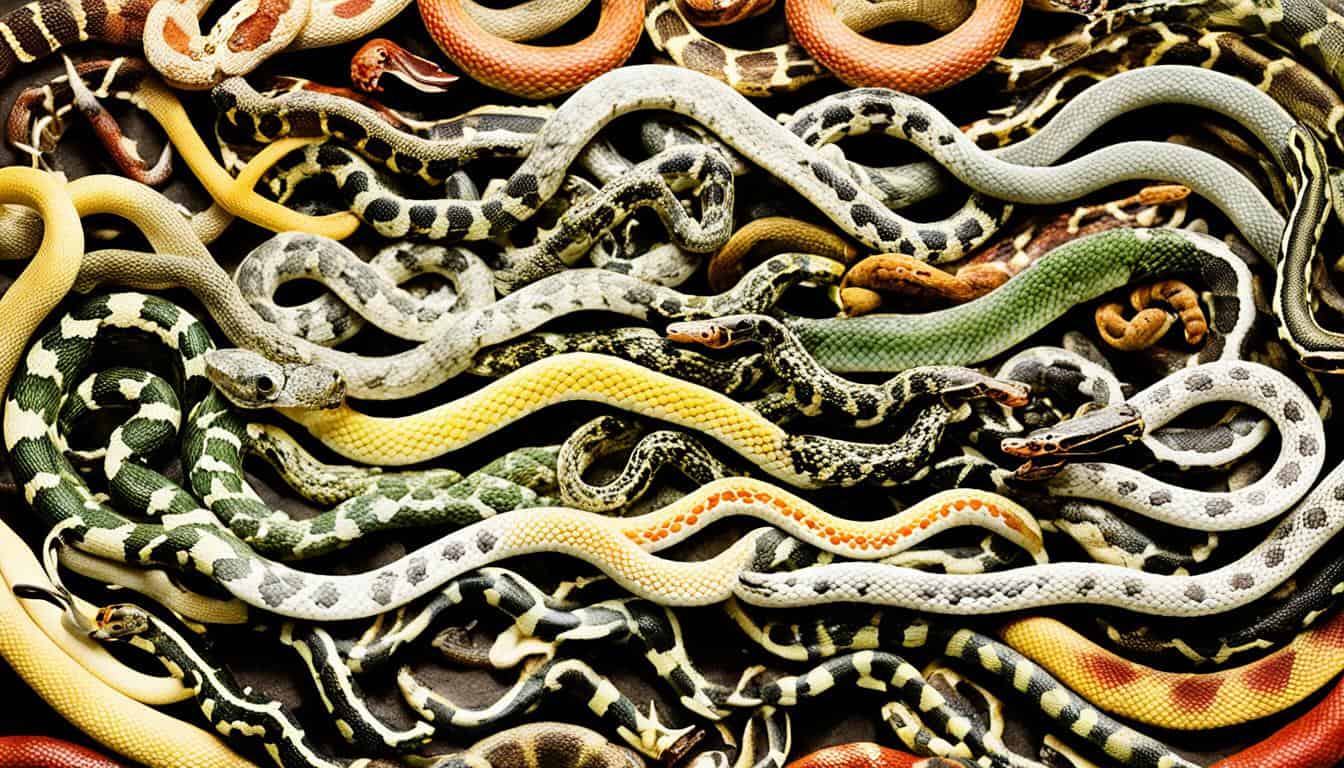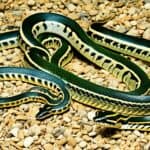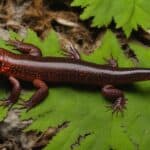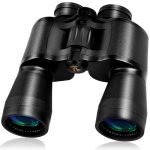Snakes are known for their long, limbless bodies. They are in the suborder Serpentes, which is part of the order Squamata with lizards. Snakes have some special traits.
For example, they don’t have ears on the outside and can’t blink. They have a see-through scale over their eyes and can shed their skin. This happens several times a year.
Snakes use their forked tongue to smell. This helps them find food or steer clear of danger. They can bite with venom, wrap around to squeeze, or simply eat their prey by being bigger and stronger. This makes them unique hunters in the animal kingdom.
They live in many places, from forests to cities. Snakes need warmth from the sun to stay active. There are about 120 snake species in the USA. Yet, only 17 are venomous and can be dangerous.
Knowing how to spot these snakes is important. A good snake identification guide can help. It’s not just for your safety but also to value their place in nature.
Understanding Snake Anatomy for Accurate Identification
To identify American snakes, you must know their anatomy well. Snakes are part of the reptile family. They have dry, scaly skin and lay eggs. Their long, limbless bodies help them move in many ways. This makes them well-suited for different places in the US.
Body Composition and Limbs
Looking at a snake, you’ll notice they seem to have no neck. This makes it hard to tell where the head ends and the body begins. Even without legs, snakes can do a lot. They can slither on the ground or even climb trees. Their shape helps them live in various locations.
Eye Characteristics
A snake’s eyes can tell us a lot about them. Snakes with vertical pupils are usually out at night. They hunt in the dark. On the other hand, snakes with round pupils like to be active during the day. These clues are very important for identifying snakes in the US.
Scale Texture and Patterns
The texture of snake scales can help us figure out what snake it is. Some have smooth scales, while others have rough or keeled scales. You might see lines on their scales. Looking at these details, along with their unique patterns, can help spot the correct snake.
| Characteristic | Description |
|---|---|
| Eyes | Vertical pupils are indicative of nocturnal activity; round pupils suggest diurnal activity. |
| Scales | Can range from smooth to rough, with some species exhibiting keeled scales. |
| Body Composition | Elongated, limbless bodies enable various species-specific movements and habitat navigation. |
| Limbs | Absent, yet highly muscular bodies facilitate diverse movements. |
Learning about snake eyes, bodies, and scales is key to knowing snakes well. This knowledge is crucial for precise snake identification in America.
Common Habitats of Snakes in the USA
The United States is home to a wide variety of snakes. They live in many different places. By knowing about these snake homes, we learn more about their lives and how they survive.
Forests and Woodlands
Forests and woodlands are perfect for snakes. These places have lots of hiding spots like logs and leaves. This makes them great for finding food and staying safe.
Snakes like the Eastern Garter Snake and the Rat Snake love it here. It’s because they get a lot of chances to catch other animals to eat in these rich areas.
Wetlands and Swamps
Wetlands and swamps are also key snake habitats. They have plenty of water and places to hide. For example, the Cottonmouth and the Northern Water Snake do well here.
The growing plants and changing water levels in these areas help snakes find food. They also stay at the right temperature, which is very important for their life.
Urban Areas
Even cities can be home to snakes. Snakes like the Common Garter Snake and the Brown Snake find their place in our urban areas. They like using gaps in buildings and piles of junk as their shelters.
This shows how good at adapting snakes are. Even with humans all around, they find ways to live.
| Habitat Type | Common Snake Species | Characteristics |
|---|---|---|
| Forests and Woodlands | Eastern Garter Snake, Rat Snake | Abundance of cover such as logs and leaves |
| Wetlands and Swamps | Cottonmouth, Northern Water Snake | Ample water sources and hiding spots |
| Urban Areas | Common Garter Snake, Brown Snake | Utilize crevices in buildings and urban debris |
Key Field Marks for Identifying Snakes
It can be hard to tell snake species apart. Yet, focusing on unique features helps spot the differences. Looking at special traits lets us name different kinds of snakes. Here are the marks to keep an eye out for:
Body Type and Length
The first thing to note is snake shape and size. Snakes come in many body shapes and sizes. Some are long and thin, while others are short and stout. Knowing this helps tell species apart.
Head Shape and Neck Distinctiveness
Next is the head and neck. Venomous snakes, like pit vipers, have a sharp, triangular head. Their necks may seem tight. On the other hand, non-venomous snakes have smoother transitions from head to neck. This makes their head shape look rounder or more even.
Tail Features
The snake’s tail also has hints for ID. Rattles on a rattlesnake’s tail are a big giveaway. Other important tail clues include the shape of the scales at the end, which are also key identification marks.
Anal Scale Structure
Looking at the scale by the cloaca is helpful, too. This scale can be one piece or divided. It helps identify species. This, along with other features, makes a solid method for snake ID.
| Identification Feature | Details |
|---|---|
| Body Type and Length | Varies from slim and elongated to short and stout |
| Head Shape and Neck Distinctiveness | Venomous – triangular head, narrow neck; Non-venomous – rounder head, less distinct neck |
| Tail Features | Rattles, pointed scales, or rounded scale tips |
| Anal Scale Structure | Single or divided scales |
Venomous Versus Non-Venomous Snakes
In the United States, there’s a great variety of snakes. It’s vital to know the difference between venomous and non-venomous ones. Venomous snakes have special saliva that can harm their prey. In the U.S., there are seventeen types, like rattlesnakes and coral snakes. Yet, these snakes are not dangerous if you don’t bother them.
It can be hard to spot venomous snakes, but there are clues. For example, most venomous snakes in the U.S. have eyes shaped like slits. In contrast, non-venomous snakes usually have round eyes. The shape of the snake’s head can also help. Venomous snakes’ heads are often shaped like triangles. This is because of their venom glands. Understanding these signs is useful for spotting non-venomous snakes and staying away from venomous ones.
Below, you’ll find a table that shows the differences between venomous and non-venomous snakes:
| Characteristic | Venomous Snakes | Non-Venomous Snakes |
|---|---|---|
| Eye Shape | Elliptical Pupils | Round Pupils |
| Head Shape | Triangular | Rounded |
| Behavior | Aggressive when threatened | Generally docile |
| Presence of Fangs | Prominent Fangs | Small Teeth |
Using the term “venomous” when snakes inject poison is correct. “Poisonous” is for toxins that can be eaten or touched. Learning to spot venomous and non-venomous snakes is important. This can make life safer and show the good they do for nature. Knowing these points well is key to living safely and dealing with venomous snakes properly.
Snake Patterns and Markings
Understanding snake markings is crucial for snake pattern identification. Different species have markings that include stripes, blotches, and more.
Snakes have unique colors and designs that cover their scales. These patterns come from genetics, age, and where they live. Learning to spot these details is key to telling different snakes apart in nature.
The table below shows common patterns. Use it to learn how to recognize snakes by their markings:
| Pattern Type | Description | Example Species |
|---|---|---|
| Stripes | Longitudinal lines running the length of the body | Garter Snakes |
| Blotches | Irregularly shaped patches | Common Kingsnake |
| Diamonds | Diamond-shaped patterns | Diamondback Rattlesnake |
| Speckles | Small dots scattered across the body | Speckled Kingsnake |
| Spots | Round, singular marks | Eastern Hognose Snake |
| Crossbands | Bands spanning across the snake’s body | Copperhead |
| Rings | Encircling bands around the body | Coral Snake |
| Two-toned | Distinct dual coloration over the body | Red Coachwhip |
By practicing snake pattern identification, you’ll get good at spotting snake species. This skill is not just cool; it also keeps you safe around snakes and helps save them.
Identifying Pit Vipers in the USA
Species like rattlesnakes, copperheads, and cottonmouths are called pit vipers. They are venomous and found in the USA. You can tell they’re pit vipers by a deep pit on each side of their head. This shows they are venomous.
Features of Rattlesnakes
Rattlesnakes have a rattle on their tail, making them very identifiable. This rattle warns when they feel threatened and also lures prey. They have triangular heads and vertical pupils.
These features are signs they are pit vipers.
Identifying Copperheads and Cottonmouths
Copperheads and cottonmouths are other important pit vipers. Copperheads have a copper-colored head and hourglass markings. Cottonmouths are called this because their mouths look white when they’re mad.
Both have the pit viper traits like heat-sensing pits and vertical pupils.
| Feature | Rattlesnakes | Copperheads | Cottonmouths |
|---|---|---|---|
| Body Markings | Rattle on tail | Hourglass-shaped markings | Sparse markings |
| Coloration | Varies (brown, gray, green) | Copper-colored head | Dark, often blackish |
| Behavior | Defensive rattle | Blends in with forest floor | Aggressive when provoked |
| Habitat | Deserts, forests, grasslands | Forests, rocky areas | Wetlands, swamps |
Mimicry in Snake Species
Snake species mimicry is a smart survival tactic in the wild. Some non-venomous snakes copy the look and actions of venomous ones. They do this to scare off enemies. This trick makes spotting snake mimics very tricky.
Common Mimics and Their Behaviors
The gopher snake is a great example. It acts and looks like a rattlesnake. It twists its tail and shows similar colors to fool predators. These snakes show how being a good actor can save your life in nature.
The kingsnake is also an interesting case. It’s a copycat of the coral snake, which is venomous. Both snakes share red, yellow, and black bands. This makes it tough for enemies, and even people, to tell them apart. Knowing these mimicry tricks helps avoid danger.
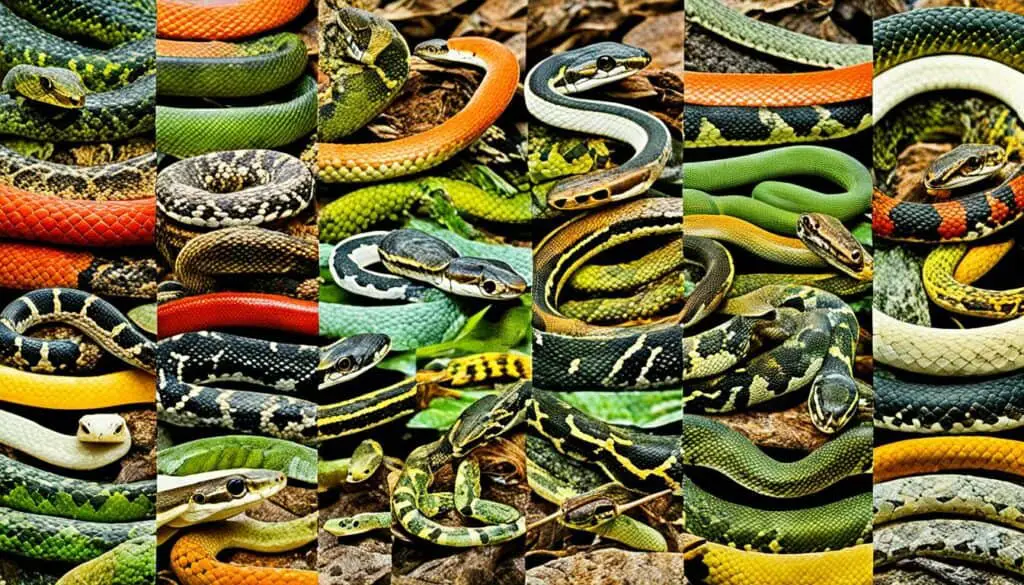
Learning about snake mimicry is not just cool; it’s useful too. It can help keep you safe by knowing which snakes are harmless and which are dangerous:
| Snake Species | Venomous Counterpart | Mimicking Behaviors | Identification Tips |
|---|---|---|---|
| Gopher Snake | Rattlesnake | Tail-rattling, similar color banding | Examine tail structure and behavior |
| Kingsnake | Coral Snake | Red, yellow, black banding | Red touches black, safe for Jack |
Being alert to snake mimicry helps you know them better. Watch for their unique signs to tell them apart. This makes outdoor adventures even more interesting and safe.
Recognizing Coral Snakes and Their Mimics
It’s key to tell coral snakes apart from their look-alikes, mainly because their venom is strong. Coral snakes are known by their bands of red, yellow (or white), and black. We’ll study these bands and what sets coral snakes apart from similar-looking species.
Color Banding Patterns
To tell a coral snake, look for its red, yellow (or white), and black bands. A helpful rhyme goes: “Red on yellow, kill a fellow; red on black, friend of Jack.” This rhyme is a good guide to identify coral snakes and not their mimics.
Key Differences Between Coral Snakes and Mimics
Look-alikes like the scarlet kingsnake don’t match the exact bands of a coral snake. Just remember that a mimic will have red next to black instead of red next to yellow. They’re safe to be around. Also, coral snakes have a slender shape.
| Feature | Coral Snake | Mimics (e.g., Scarlet Kingsnake) |
|---|---|---|
| Color Banding Pattern | Red adjacent to yellow | Red adjacent to black |
| Mnemonic | “Red on yellow, kill a fellow” | “Red on black, friend of Jack” |
| Body Shape | Slender | Varies; usually similar |
| Head Shape | Rounded | Varies; often more triangular |
It’s important to watch for these cues and understand coral snake patterns. This knowledge can keep you safer outdoors.
Seasonal Behavior of Snakes
Snakes act differently throughout the year because they need the sun to warm up. This makes their activities change with the seasons. Knowing when snakes are most active can help us expect where they might be.
In the warm months, snakes move a lot more in not-too-hot areas. But when it’s cold, they slow down and might hide away. This cycle affects how much they eat, move, and explore.
For example, snakes in the USA take a winter break called brumation. Yet, those in hot places don’t really stop. Their steady warm weather keeps them active most of the year.
Learning about snake seasons can also help us recognize different kinds of snakes. It’s important to understand how the climate influences snakes. This knowledge can help us safely share spaces with them.
Documenting and Reporting Snake Sightings
Keeping detailed records of snake species in the U.S. is important. Not just for yourself, but for science and conservation efforts. By noting snake sightings and their behaviors, you help enhance your skills and the general understanding of snakes.
The Importance of a Naturalist Journal
A journal helps you keep track of snake encounters. Including when and where you saw the snake, as well as the weather, is key. This info is useful for both snake fans and experts, aiding in knowing when and where snakes like to be.
Recording Geographic and Habitat Data
It’s crucial to detail where and in what environment snakes were spotted. Include GPS locations and details about their home, like nearby water or the type of plants. This data is not just for you; it also helps scientists in their work to protect snakes and their habitats.
FAQ
How do you identify different species of snakes in the USA?
Looking for different snake species in the USA involves checking their looks and where they live. You look at their body, head, and neck, with attention to how their tails end. You also consider the patterns and textures of their scales. Knowing where they make their home and what they do helps too. If you want to know more, a snake guidebook is a good idea.
What are the key aspects of snake anatomy for identification?
To tell snakes apart, look at their bodies, eyes, and skin. Snakes are long and have no legs, and their eyes don’t move. They have many types of skin, from smooth to rough. Noting these features helps figure out what kind of snake it is.
Where can snakes commonly be found in the USA?
Snakes live in many places in the USA, like forests, wetlands, and even cities. These areas offer food and hiding spots. Some snakes need warmth to survive. So, the types of snakes you find depend a lot on where they can live.
How can you identify venomous versus non-venomous snakes?
In the USA, venomous snakes, including rattlesnakes and copperheads, have special marks. These include pit organs and up-and-down eye slits. Non-venomous snakes don’t have these features. It’s important to know the difference to stay safe.
What patterns and markings are crucial for snake identification?
Powerful for figuring out snake types are their various patterns and colors. Snakes might have stripes, spots, or rings on their skin. These designs can give clues about who they are. Knowing these clues helps identify different snakes.
What are the identifying features of pit vipers in the USA?
Pit vipers in the USA, like rattlesnakes, have special heat-sensing pits and shaped heads. They also have eyes that look like vertical slits. These parts help mark them as venomous.
What is mimicry in snake species?
Mimicry means some snakes copy venomous ones to stay safe. They might look alike in color or shape. Knowing about this behavior is key for not getting the wrong snake.
How can you recognize coral snakes and their mimics?
Coral snakes are easy to spot with their red, yellow, and black bands. Their mimic, the scarlet king snake, has red, yellow, and black bands too, but in a different order. The saying “red on yellow, kill a fellow; red on black, friend of Jack” helps remember which is which.
How does seasonal behavior affect snake activity?
Snakes act differently by season due to their need for warmth from outside. It can be warm enough for them to move all year in some places. In cooler spots, they slither more in warmer months and might sleep in winter. This info helps understand when and where you might see snakes.
Why is documenting and reporting snake sightings important?
Writing down and telling about snakes we see helps learn about them and protect their homes. With a journal, note where, when, and what the weather was like when you saw a snake. This helps science and efforts to save snakes.
How do you use a naturalist journal for snake sighting documentation?
A journal is great for keeping track of snake sightings. Write down the place, day, time, and what the area was like. This helps with snake studies and protecting them. It’s also useful for telling if you saw a rare or dangerous snake to the right people.

